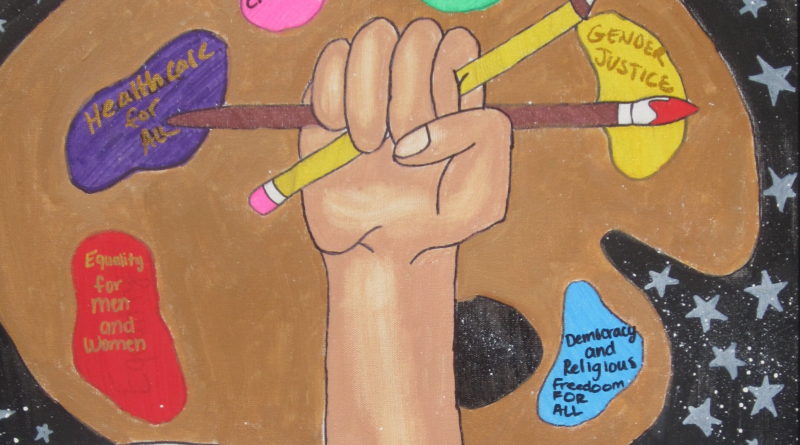Children’s Prison Art Program Helps Juveniles Process Emotions Through Art
By Rachel Leber
HOUSTON — There is a growing body of research that shows a direct connection between arts education in prison and lower rates of recidivism. The Children’s Prison Art Program (CPAP) in Houston is a nonprofit that helps kids in juvenile detention to process their emotions through art, putting the research to the test.
CPAP’s mission statement is: “to expose youth in correctional facilities to an innovative, educational creative writing, theater and visual art forum where they can express their thoughts and visions in constructive ways, and present their art to their peers and to the community at large,” according to the nonprofit’s website. The three central organizational goals of CPAP are, “to increase the number of incarcerated youth with access to arts education; to encourage at-risk youth to cultivate an appreciation of the arts; and to enable juvenile offenders to exit the cycle of violence, gang affiliation and other destructive behaviors.”

CPAP was founded 23 years ago as a 501(c)3 non-profit organization to positively impact the lives of thousands of incarcerated youth in Harris County, Texas. From its inception to present day, CPAP has served 25,000 high-risk youth. Birgit Walker, a lifelong arts activist and founder of CPAP, started the program in 1994 at the Harris County Juvenile Detention Center, and has since been able to expand the program to two other juvenile facilities.
CPAP serves almost 900 incarcerated youth each year with an audience of 1,500 facility staff, volunteers and youth. CPAP’s summer education programs reach about 100 youth each year, and the art exhibits of all of the children’s art reach an audience estimated at 10,000 annually.
The volunteer-supported program includes theater, creative writing and visual arts, and is tailored to youth ages 10 to 17. The goal of the program is to provide arts-based intervention and prevention programs to youth who are involved with violence, delinquency, substance abuse and other harmful behaviors, with the intention of breaking them out of these destructive behaviors and patterns.
The two main programs at CPAP are Art Behind Walls and Wondrous World, with Art Behind Walls being the year-round creative writing, visual art and theater workshop, and Wondrous World as the summer equivalent. Over 300 original performances have been written and performed by CPAP program participants. CPAP was recognized by the Harris County Probation Department from 2009 to 2013 in its annual report for bringing an integral learning dimension to residents of the juvenile facilities.
For some children participating in the program, it may be the first time they are being asked what they think, what they feel, and to share or express that. For example, a recent workshop asked girls to discover their inner strength by producing images of larger-than-life women in control of their universe. “That’s the power of this — making kids conscious,” said Diana Muniz, a visual artist who works with the project trying to teach children about self-care and self-love, in a recent interview with Houstonia Magazine. “We process emotionally through these paintings. No, it’s not art therapy, but it is healing on a soul level.”

